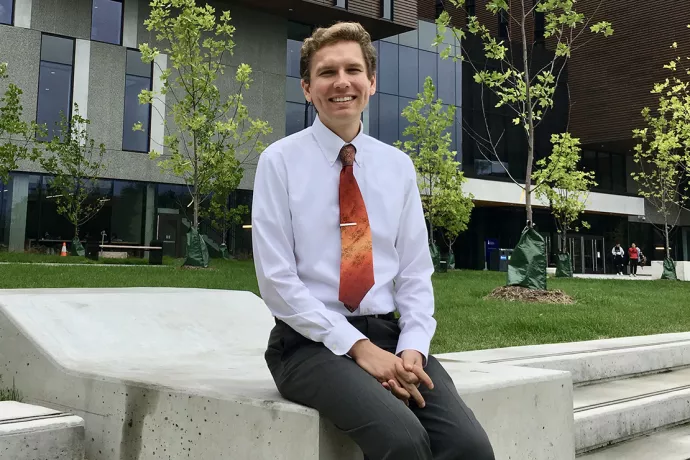
Post-doctoral fellow wants to bring Indigenous communities into Canadian parks
As we walk the path of reconciliation, how can parks foster better relationships with Indigenous communities? That’s the question Chance Finegan hopes to answer with a study launching this summer.
Finegan is a post-doctoral fellow with U of T Mississauga’s Department of Geography and the Centre for Urban Environments. Through interviews with park management and Indigenous community leaders, Finegan hopes to learn more about the relationship between Canadian park agencies and contemporary urban Indigenous communities. His research will focus on four municipal, provincial and federal parks located in urban centres across the country.
“Parks are places where the state controls the land, down to where you can sleep and eat,” says Finegan. In the past, park interpretation programs often overlooked Indigenous heritage entirely, or defaulted to basic acknowledgment of the historic use of the land. “I’m interested in understanding how protected natural areas or parks can ethically engage with Indigenous peoples and their traditional lands and heritage,” he says.
Reconciliation efforts offer new opportunities to engage with Indigenous communities, but Finegan says there’s an information gap in training for parks management personnel. In a previous study, Finegan surveyed nearly 400 training programs for parks and land resource management programs and found a dearth of information about working with Indigenous communities.
“Incorporating Indigenous heritage and perspectives on settlement and the land is really powerful, but there isn’t a lot of study of good relationships or best practices to follow,” he says.
Finegan hopes to learn more about hunting and fishing rights, access to traditional medicinal plants, like tobacco, and the opportunity for Indigenous users to conduct tourism businesses or host cultural events within parks spaces.
He is particularly interested in how urban Indigenous communities interact with park spaces. “More Indigenous people live off reserve than on, and that leaves a lot of people out of the conversation,” he says. In urban areas, the Indigenous community includes people from diverse geographic and traditional communities. There isn’t a unified audience or authority to work with, which creates a different dynamic for park authorities attempting to serve and include those groups.
The researcher also hopes his findings will inform training for long-term and seasonal park employees. He is committed to ensuring his work is accessible to Indigenous community members through open access journals and conferences. The end goal is to foster better relationships between park administrators and Indigenous park users.
“We need practitioners to be listening to communities,” he says. “As academics, we can use that platform to amplify voices in spaces where they might otherwise not be heard.
“We all have a stake in this relationship.”
This story first appeared in the Spring 2020 issue of M Magazine
